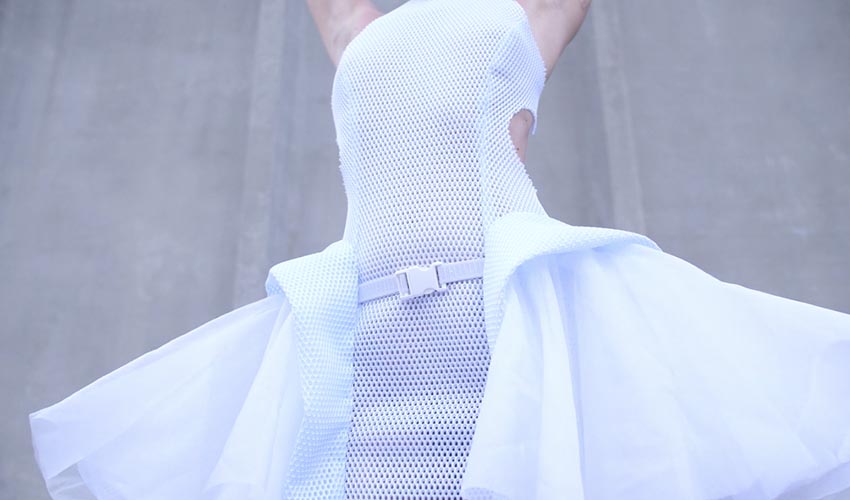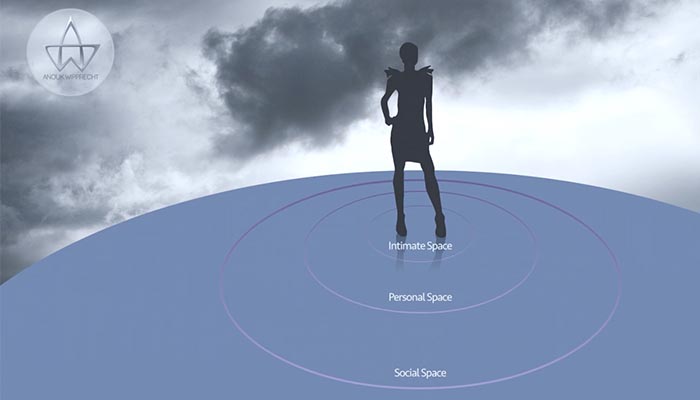3D printed Proximity Dress for social distancing

In a future where electronics are predicted to be embedded in everyday objects, what kind of clothes will we wear? How will we socialize in our world when we are supervised by technology? These are the questions Dutch-based high-tech fashion designer Anouk Wipprecht asks us to reflect on as we move towards a world that is increasingly connected. Anouk Wipprecht is working in the emerging field of FashionTech, which combines fashion design with engineering, science and user experience design. Several years ago, Anouk explored the idea of personal space with her Spider Dress. Today, the designer is presenting an evolution of that earlier work with her Proximity Dress – very fitting in the current context of social distancing!
Using 3D printing technologies, Anouk designed a dress, called the Proximity Dress, that creates physical barriers when a person is detected in the immediate surroundings of the wearer. To create this barrier, the dress integrates sensors that are capable of detecting movement around the wearer. Therefore, as it detects movement, using a robotic 3D printed hip mechanism, built into the dress, and a resin 3D printed transparent collar with integrated sensors, the dress extends to create a barrier. The hip mechanisms that are holding the servos to the mechanic hip parts are 3D printed using Selective Laser Sintering (SLS). The material used is Nylon PA-11 as it can endure more stress. The 3D printed transparent collar made from VeroClear material, has a more aesthetic use, and was 3D printed using a PolyJet machine from Stratasys.

Anouk explains in more detail where the idea of the dress comes from: “As with my earlier robotic Spider Dress and Smoke Dress, my designs are based on the Proxemics Theory of Edward T. Hall. This defines four spaces around the body, each with their own characteristic distances. Whereas Hall had to measure the space between people using a wooden stick, I have been working since 2007 to translate these concepts into the digital domain, in order to measure the spaces between people up to a range of 25 feet.”
It’s not the first time additive manufacturing is used in the world of fashion. Mostly used by high-end designers, we have not seen many projects that bring the technology to high-street stores. Nevertheless, projects such as these showcase the incredible design freedom, and new geometries that can be achieved with 3D printing, bringing new features to our clothing. Additionally to unleashing the creativity of designers and stylists, and bringing more personalisation to the wearer, 3D printing technologies could potentially reduce the amount of waste in the fashion industry. An important factor to consider!
What do you think of this 3D printed dress? Let us know in a comment below or on our Facebook and Twitter page! Don’t forget to sign up for our free weekly Newsletter, with all the latest news in 3D printing delivered straight to your inbox!






